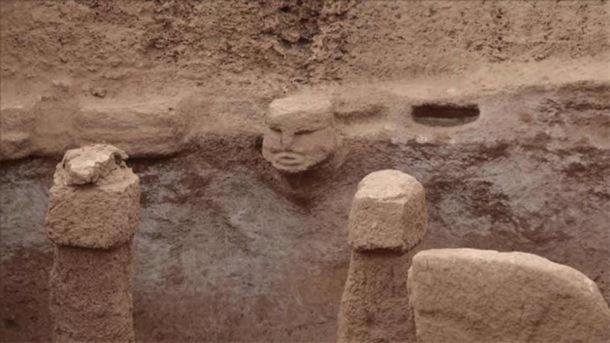
Taş Tepeler: Anatolia’s Land Of Great Transformation
Taş Tepeler means “Stone Hills” and refers to an area covering some 200 kilometers (124 miles) in ancient Anatolia, now Turkey, in the vicinity of present day Şanlıurfa. The Turkish Tourist Board has started to refer to the entire area as the ‘Land of Great Transformation’. It is an apt title. As far as anyone knows, this is where our civilization began. About 12,000 years ago, this land was home to a people who were in transition from hunter-gatherers to settled communities. It was the Neolithic (New Stone) Age, the anthropological parameters of which are now in complete flux.

Archaeological excavations at Göbekli Tepe (Rolfcosar / CC BY-SA 3.0)
Discovering Gōbekli Tepe
Up until 1994, when German archaeologist Klaus Schmidt discovered the site now called Göbekli Tepe, part of the Taş Tepeler complex, it was assumed that the geography and the order of events that preceded modern-day civilization were clear cut. First came the invention of agriculture, in areas such as Mesopotamia and Egypt. That led to the development of settled towns and villages, followed by the formation of organized religion. This was archaeological gospel according to all the history books. It formed the bedrock of what was taught in educational institutions from elementary schools through university graduate programs.
Then came Schmidt’s discovery, and everything changed. Göbekli Tepe was first thought to be a temple. That implies organized religion. But it was built before the invention of agriculture. It obviously required a rather large and settled workforce. But it was built, unquestionably, some 12,000 years ago. So how could agriculture, long thought to be some 6,000 to 8,000 years old, have come first in line? The new order now seemed to say religion led to settled communities, which led to agriculture. That is exactly the reverse of what had been taught for generations. Needless to say, shock waves reverberated throughout the whole field of ancient studies.

Human depictions and 3D sculptures are seen after they were unearthed in Karahan Tepe. ( Anadolu Agency )
Taş Tepeler Beyond Gōbekli Tepe
For some time, it was fashionable to say that Göbekli Tepe was the first such project of its time, a unique, stand-alone series of connected structures that represented humankind’s first venture in city, or at least temple, building. But in 1997, the discovery of Karakan Tepe, now being excavated by Necmi Karul, only 46 kilometers (28 miles) from Şanlıurfa, revealed a structure similar to Göbekli Tepe, but perhaps even older.
Like this Preview and want to read on? You can! JOIN US THERE ( with easy, instant access ) and see what you’re missing!! All Premium articles are available in full, with immediate access.
For the price of a cup of coffee, you get this and all the other great benefits at Ancient Origins Premium. And - each time you support AO Premium, you support independent thought and writing.
Jim Willis is author of nine books on religion and spirituality, he has been an ordained minister for over forty years while working part-time as a carpenter, the host of his own drive-time radio show, an arts council director and adjunct college professor in the fields of World Religions and Instrumental Music. He is author of The Quantum Akashic Field: A Guide to Out-of-Body Experiences for the Astral Traveler
Top Image: A human head in an ancient wall at the Karahan Tepe site in Turkey. Source: Ancient Architects / YouTube screenshot
By Jim Willis















